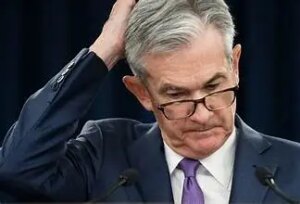The Fed Under Pressure: Trump’s Stance on Jerome Powell and Potential Successors

The Federal Reserve, often referred to as the nation’s central bank, plays a crucial role in guiding the U.S. economy through interest rate adjustments and monetary policy decisions. Recently, the relationship between President Donald Trump and Federal Reserve Chairman Jerome Powell has sparked considerable debate, raising questions about the interplay between politics and economic strategy.
In recent remarks to reporters, Trump stated unequivocally, “No, I have no intention of firing him,” while simultaneously expressing his desire for Powell to be more proactive in lowering interest rates: “This is a perfect time to lower interest rates.” On the surface, this might appear to be a harmonious relationship between the President and the Fed, but a closer examination reveals the complexities of their interactions.
The Ambiguous Right to Fire
While the President’s assertion suggests he has the authority to dismiss the Fed Chair if he so desired, recent discussions have surfaced regarding potential loopholes to facilitate Powell’s termination. White House economic advisor Kevin Hassett recently confirmed that the administration was actively considering these possibilities. However, such moves would be unprecedented and fraught with risk. Historically, the independence of the Federal Reserve has been upheld to shield it from political pressures, a principle that is particularly vital during turbulent economic times.
Powell’s Tenure and the Pressure to Act
Jerome Powell, appointed during Trump’s first term, has consistently faced pressure from both sides of the political spectrum. Trump originally appointed him with the expectation that Powell would align the Federal Reserve’s policies with the administration’s fiscal strategies. Yet, Powell’s independence became evident when he directly criticized the Biden administration for its spending policies, posing a concern for future generations.
The conundrum is exacerbated by the Fed’s recent quantitative easing (QE) measures, which many believe have failed to achieve their intended outcomes. Trump, viewing the economy through the lens of a buyer rather than a lender, continues to push for lower interest rates, pointing to perceived stagnation and seeking to re-energize economic growth.
A Potential Successor: Kevin Warsh
While speculation about Powell’s dismissal looms, a critical question arises concerning who may succeed him. Several names have emerged, including Fed governor Kevin Warsh, economist Art Laffer, and Larry Kudlow. Of particular interest is Warsh, who many believe is a frontrunner for the Fed Chair role despite his mixed track record.

Warsh’s previous tenure as a Federal Reserve governor from 2006 to 2011 was marked by controversial decisions. He was part of the leadership that ultimately sanctioned the decision to let Lehman Brothers fail, a pivotal moment in the 2008 financial crisis. Critics argue that Warsh underestimated the cascading effects this decision would have on the global economy. His hawkish stance on inflation indicates a preference for tighter monetary policies aimed at curbing government spending.
However, it’s essential to note that Warsh’s philosophy diverges from Trump’s calls for a more accommodating Fed. He historically opposed QE policies, expressing skepticism about their role in stimulating the economy during recovery phases. His views suggest a willingness to intervene in economic activities but a reluctance to allow natural market cycles to dictate market realities.
The Future Landscape of the Fed and Economic Indicators
Looking ahead, the next pivotal date in the economic cycle is pegged at May 7, 2026, marking it as a critical juncture on the Economic Confidence Model. This forecast aligns with the historical cycle of economic shifts, suggesting significant changes may be on the horizon. As the dynamics of the Fed continue to evolve amid political pressures, investors and economic enthusiasts alike should prepare for how these winds of change will shape the landscape.
At Extreme Investor Network, we strive to bring you the latest insights and deep analyses that empower investors to make informed decisions. As this story unfolds, stay tuned for our expert commentary, comprehensive analysis, and predictions about the impact of Federal Reserve decisions on your investments and the broader economy. In the world of finance, knowledge is power—let us help you harness it.

